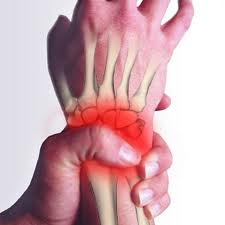No Pain Therapy Relief Oil
Target the pain with a beautifully soothing blend of deeply penetrating, naturally derived ingredients including - Comfrey (known for its healing powers) - Tumeric (may be beneficial for arthritis, sore joints and muscles) - Cayenne (known to give pain relief) - Eucalyptus Oil (used for its anti-inflamatory and analgesic qualities)




Medical
Capsaicin is used as an analgesic intopical ointments,nasal sprays (Sinol-M), and dermal patches torelieve pain,typically in concentrations between 0.025% and 0.25%. It may be applied incream form for the temporary relief of minor aches and pains of muscles andjoints associated witharthritis, backache, strains and sprains, often incompounds with other rubefacients.[25] Itis also used to reduce the symptoms of peripheral neuropathy suchas post-herpetic neuralgia caused by shingles.[26] Indirect application the treatment area is typically numbed first with a topicalanesthetic;capsaicin is then applied by a therapist wearing rubber gloves anda face mask. The capsaicin remains on the skin until the patient starts to feelthe "heat", at which point it is promptly removed. Capsaicin is alsoavailable in large bandages (plasters) that can be applied tothe back.
Capsaicin creams are used to treat psoriasis asan effective way to reduce itching and inflammation.[27][28]
According to animal and human studies, the oralintake of capsaicin may increase the production of heat by the body for a shorttime. Due to the effect on the carbohydrates breakdownafter a meal, capsaicin may also be used to regulate blood sugarlevels.[29]
Capsaicin selectively binds to a protein known as TRPV1 that resides onthe membranes of pain and heat-sensing neurons.[30][31] TRPV1is a heat-activated calcium channel that opens between 37 and 45 °C (98.6 and113 °F, respectively). When capsaicin binds to TRPV1, it causes the channel toopen below 37 °C (normal human body temperature), which iswhy capsaicin is linked to the sensation of heat. Prolonged activation of theseneurons by capsaicin depletes presynaptic substance P,one of the body's neurotransmitters for pain and heat. Neurons that do notcontain TRPV1 are unaffected.
The result appears to be that the chemical mimics aburning sensation; the nerves are overwhelmed by the influx, and are unable toreport pain for an extended period of time. With chronic exposure to capsaicin, neurons aredepleted of neurotransmitters, leading to reduction insensation of pain and blockade of neurogenic inflammation. If capsaicin isremoved, the neurons recover.[32]</